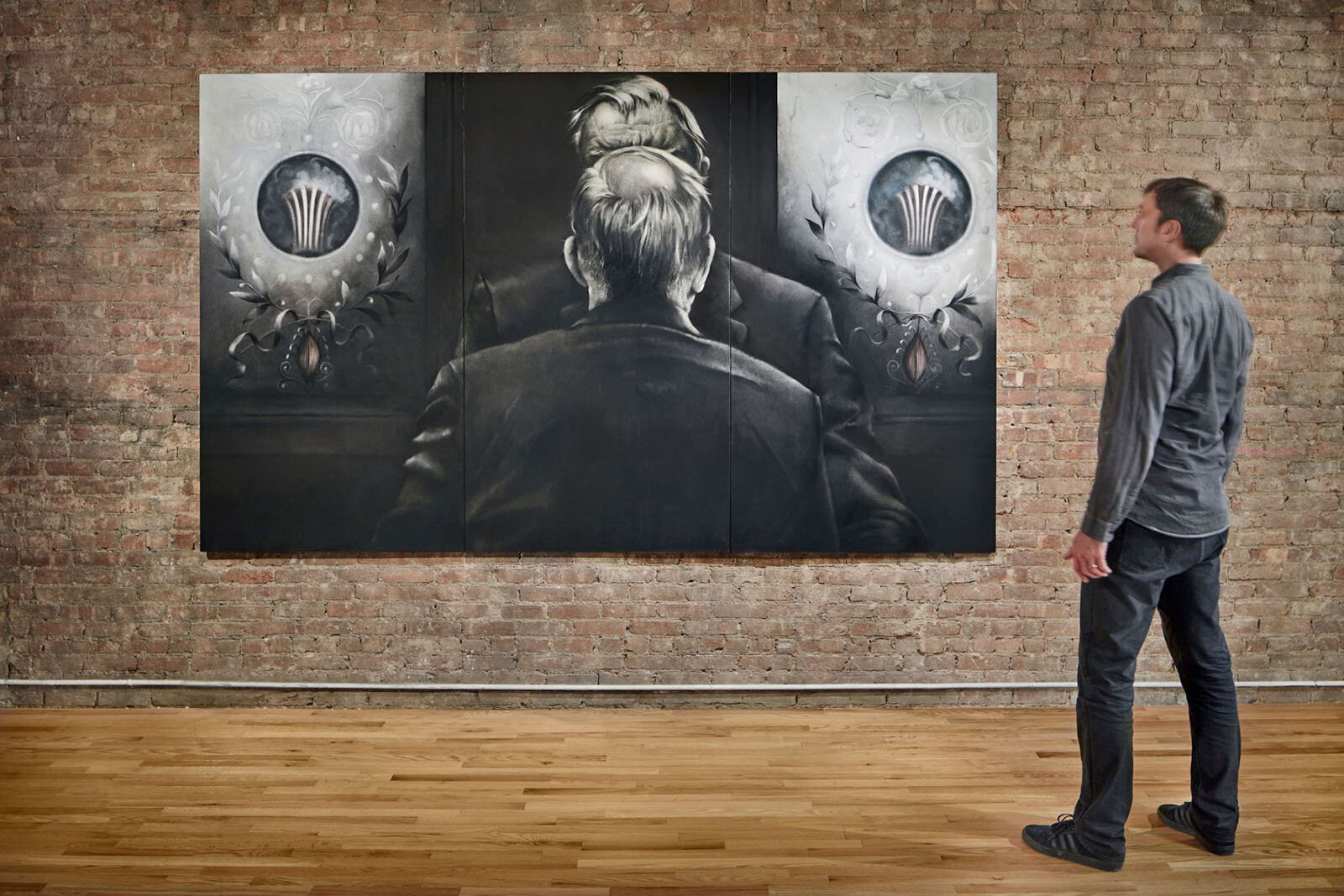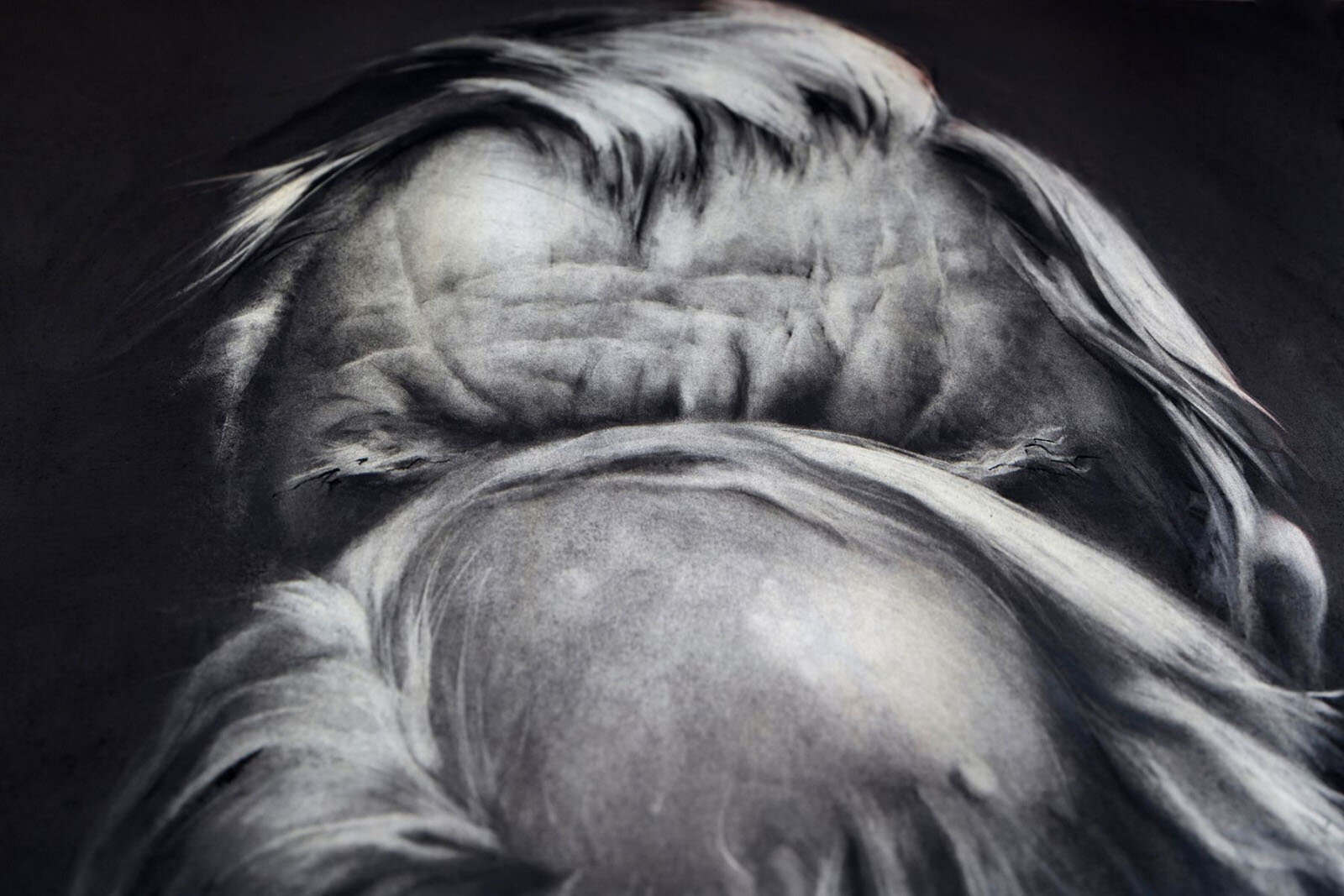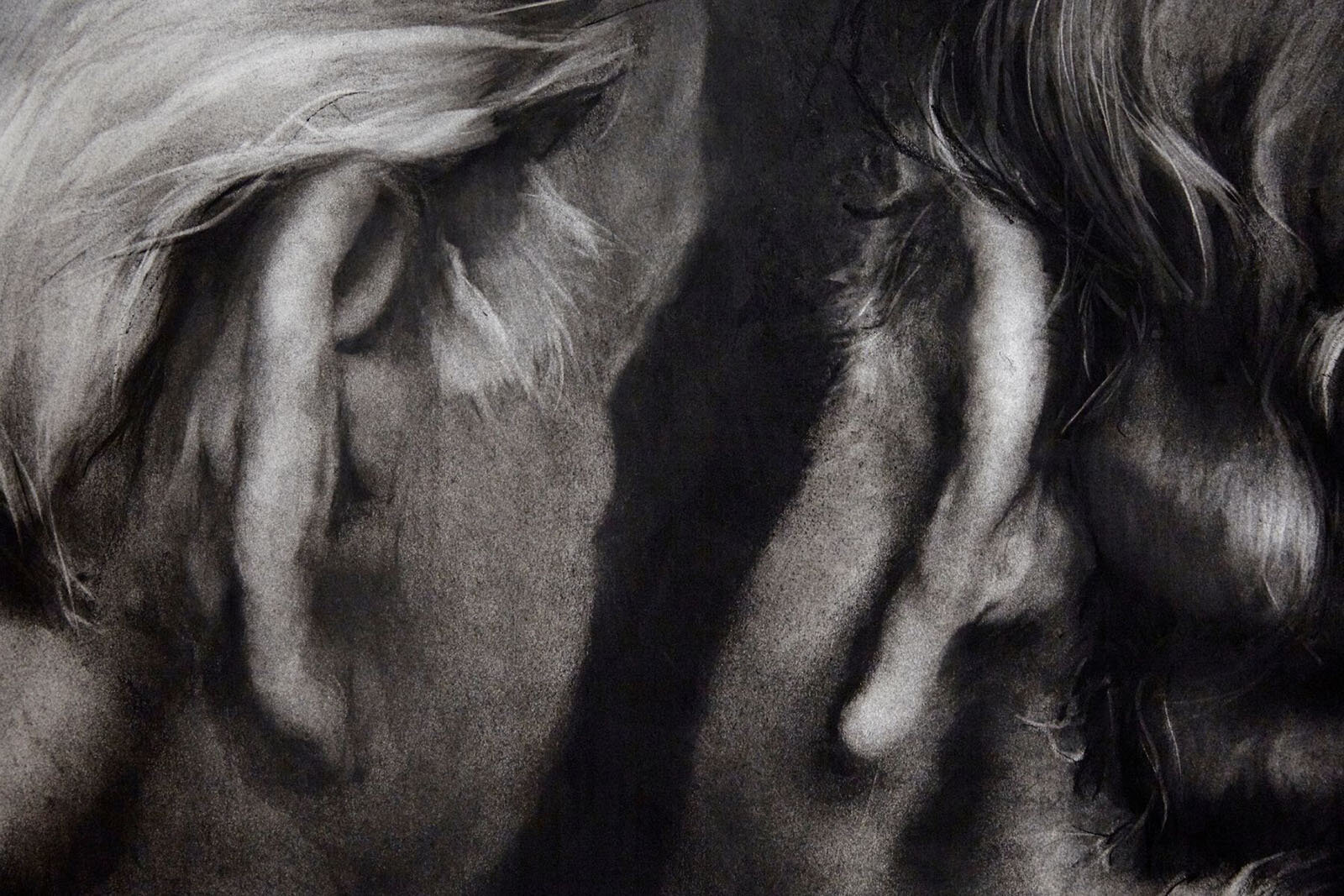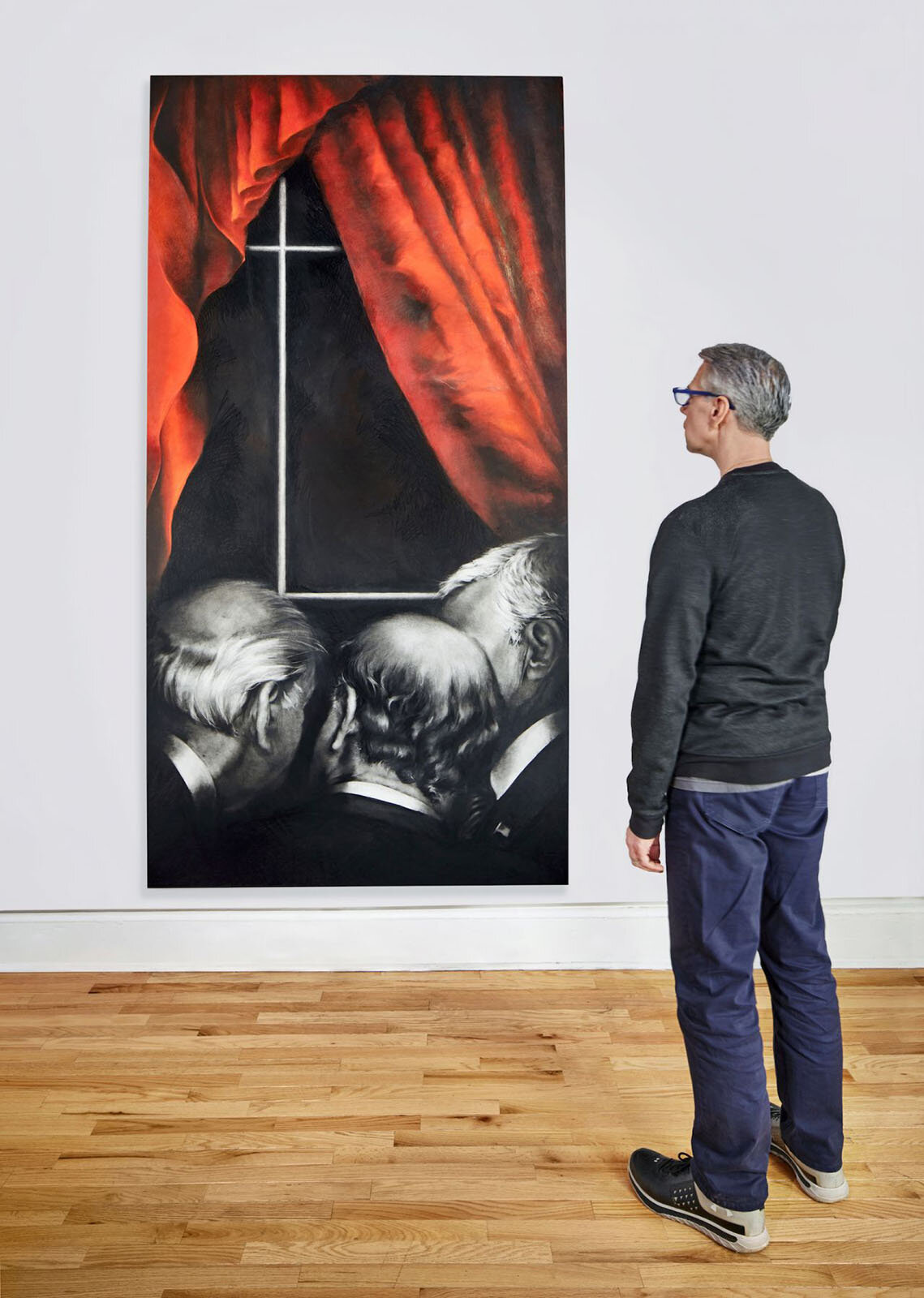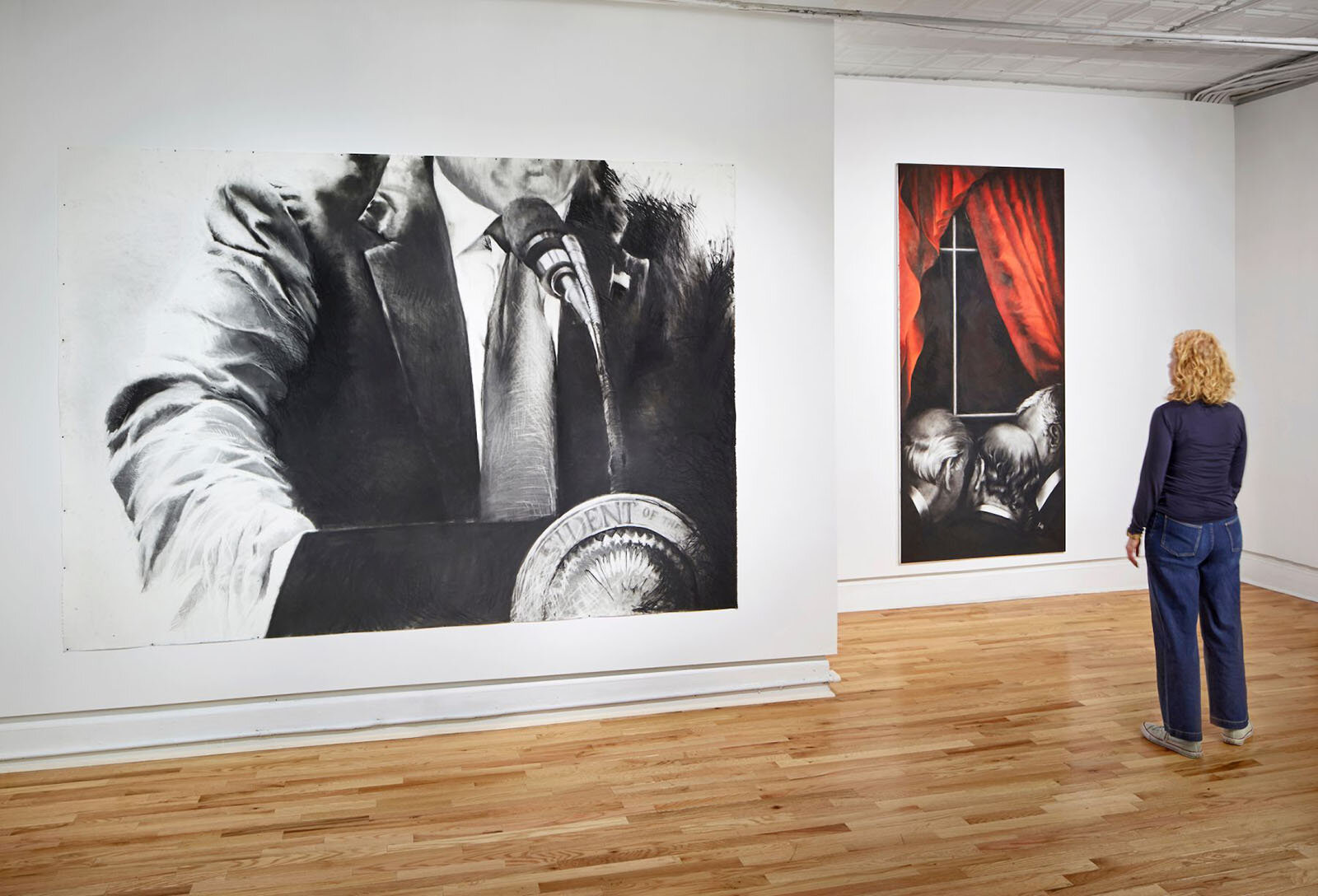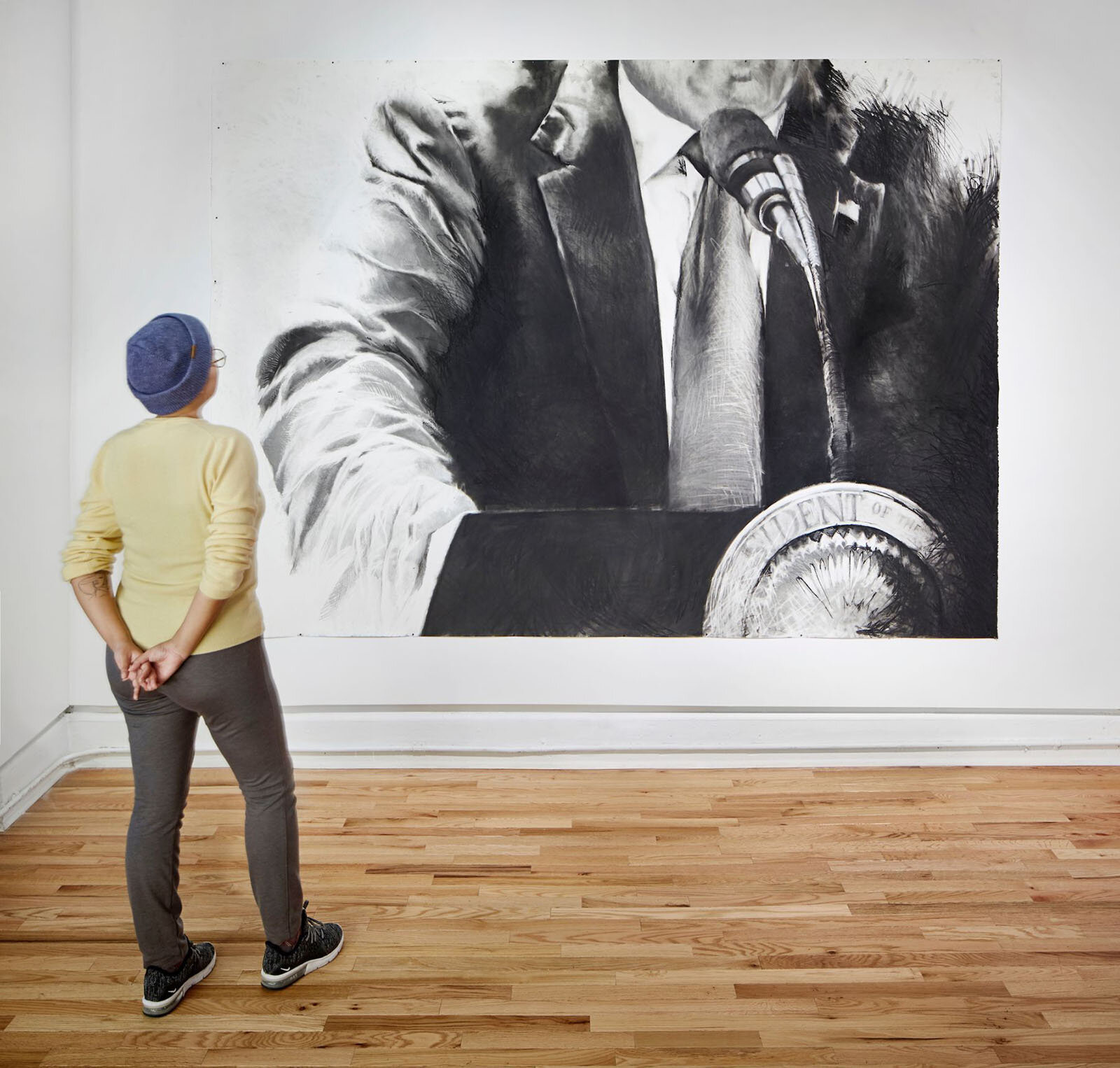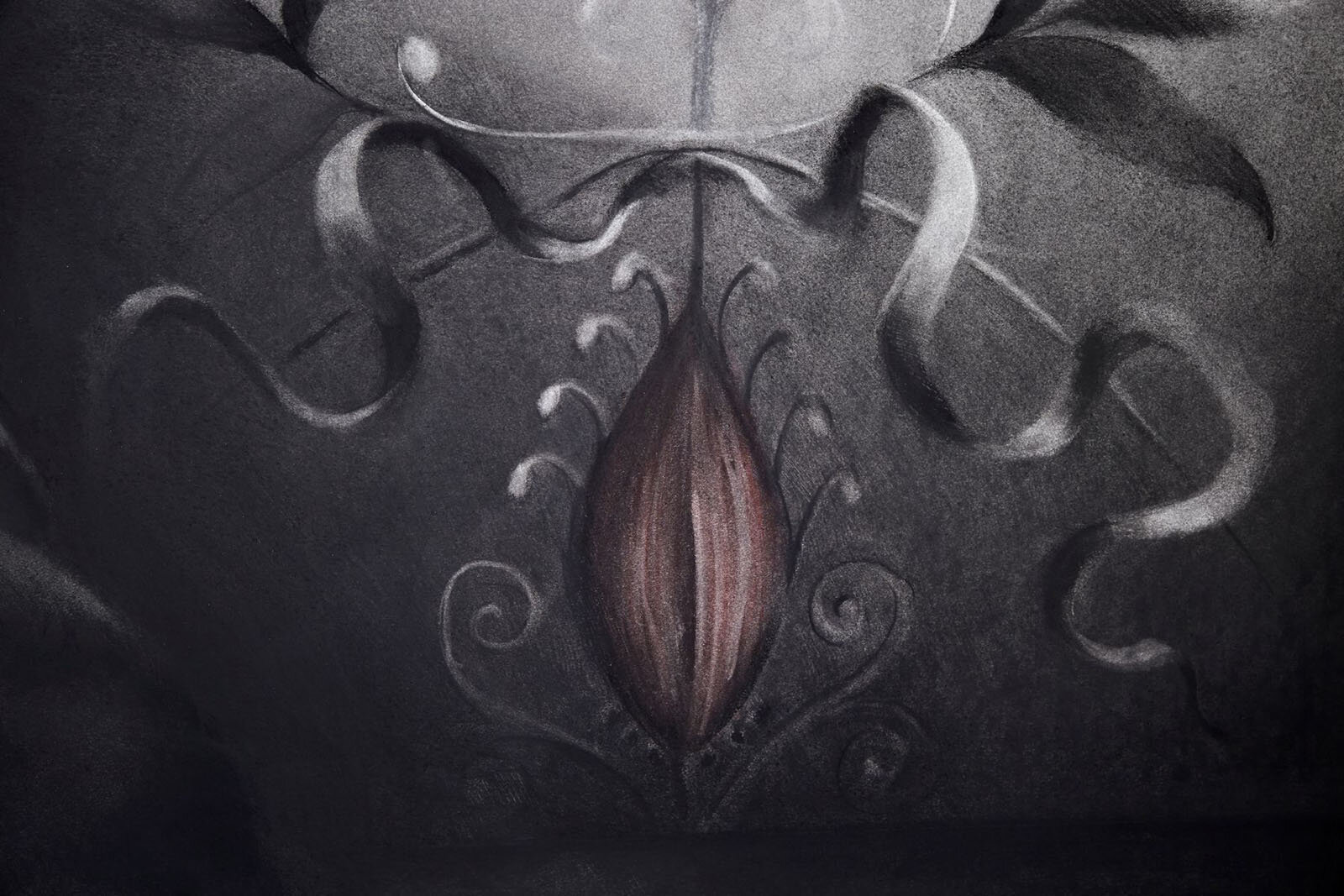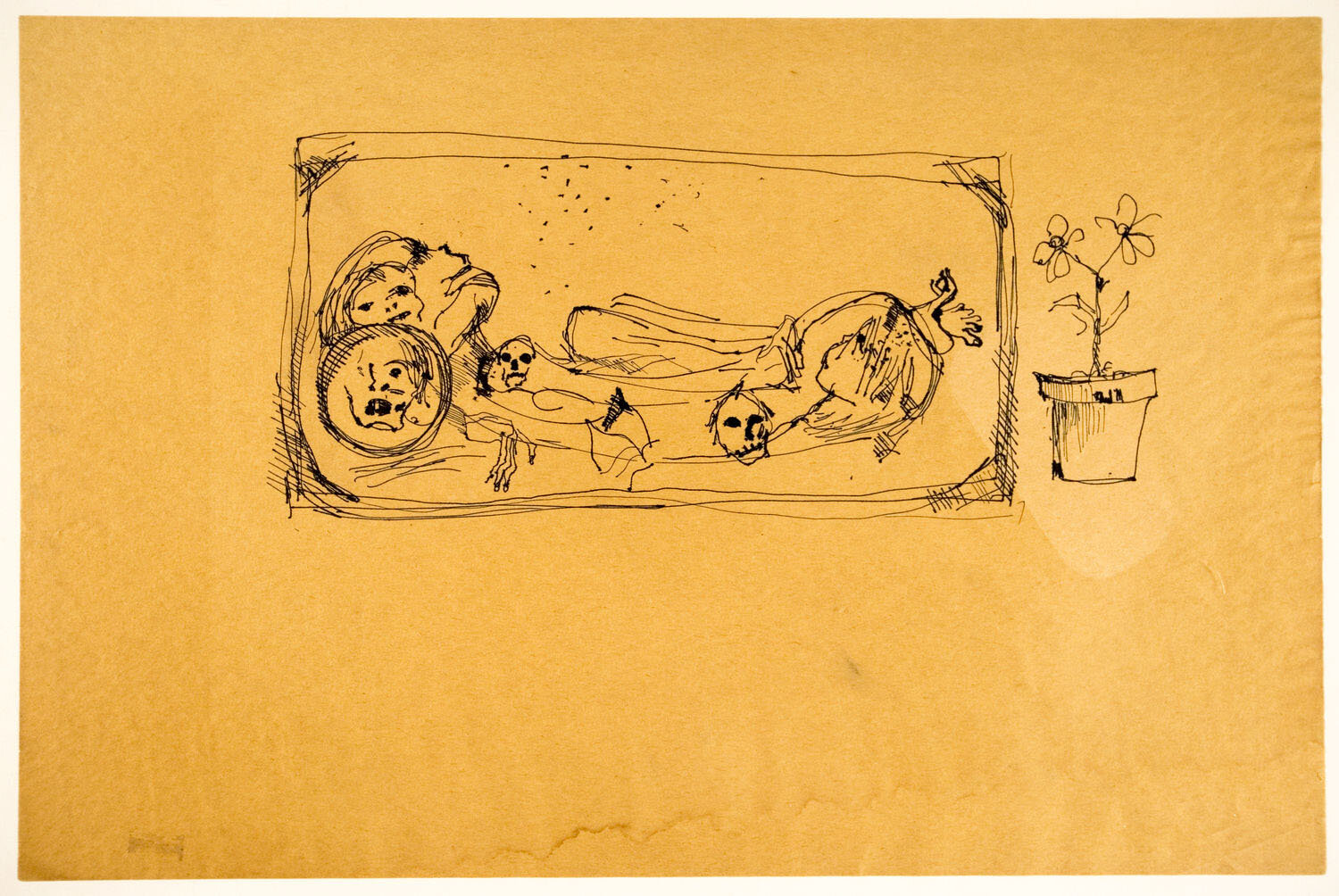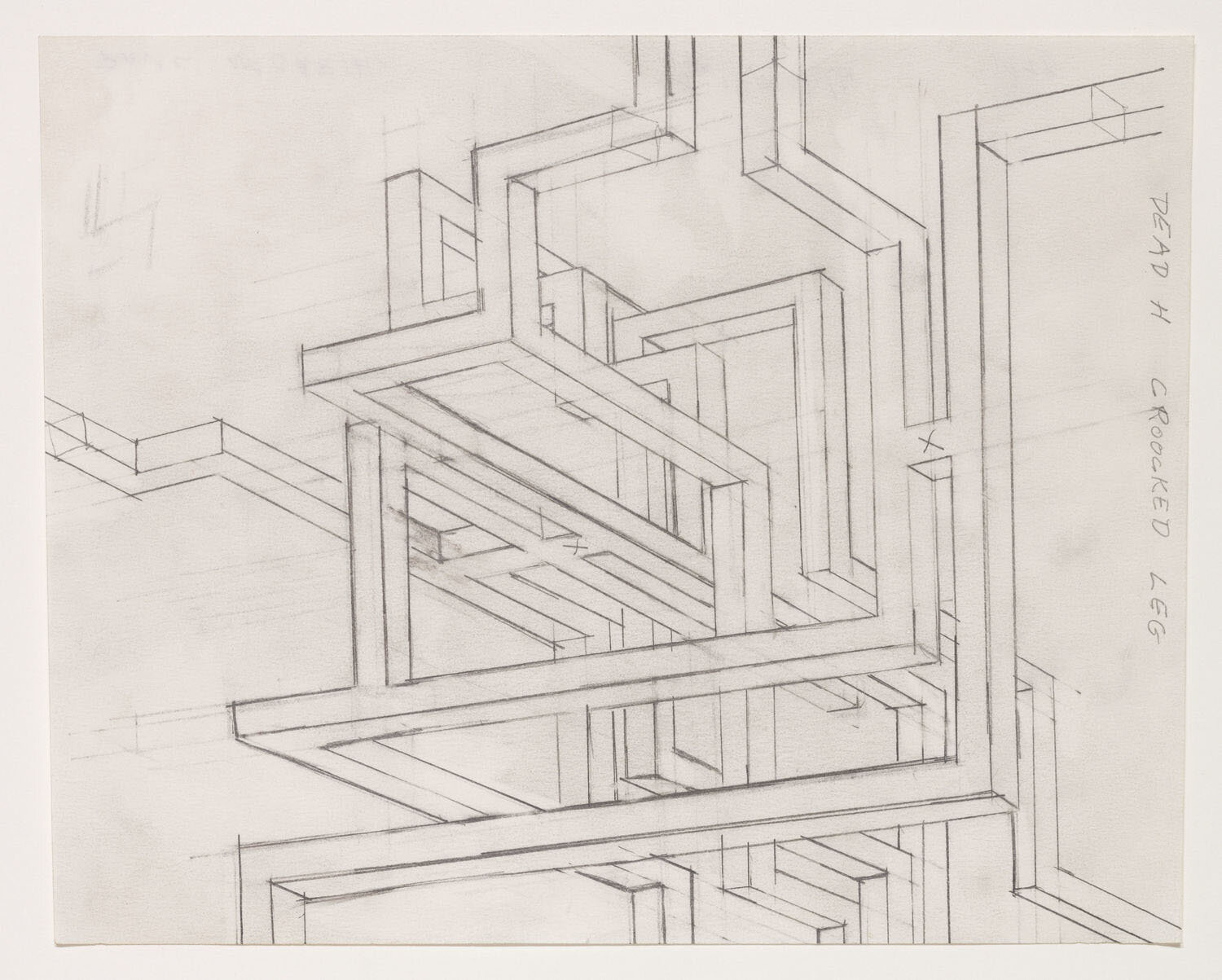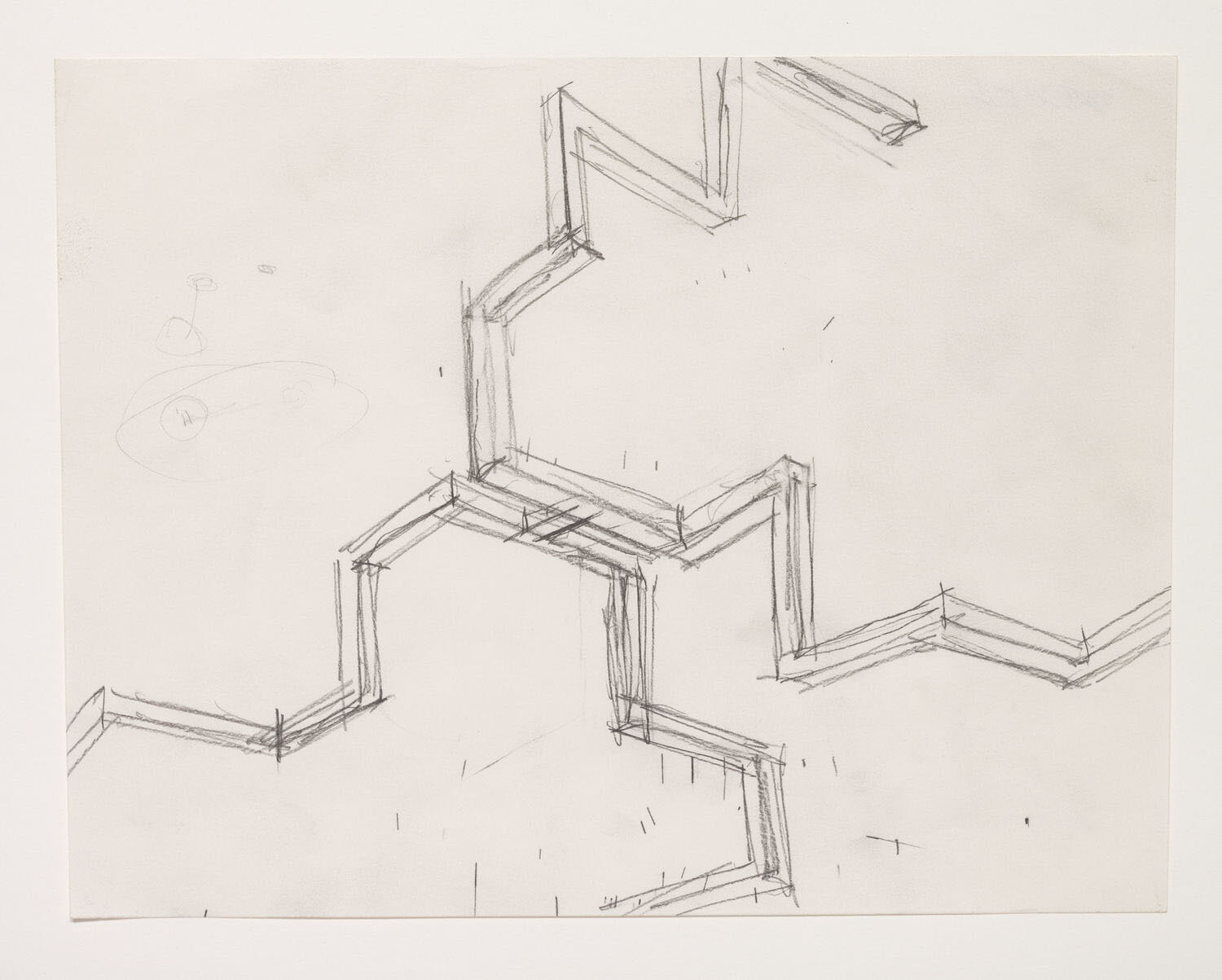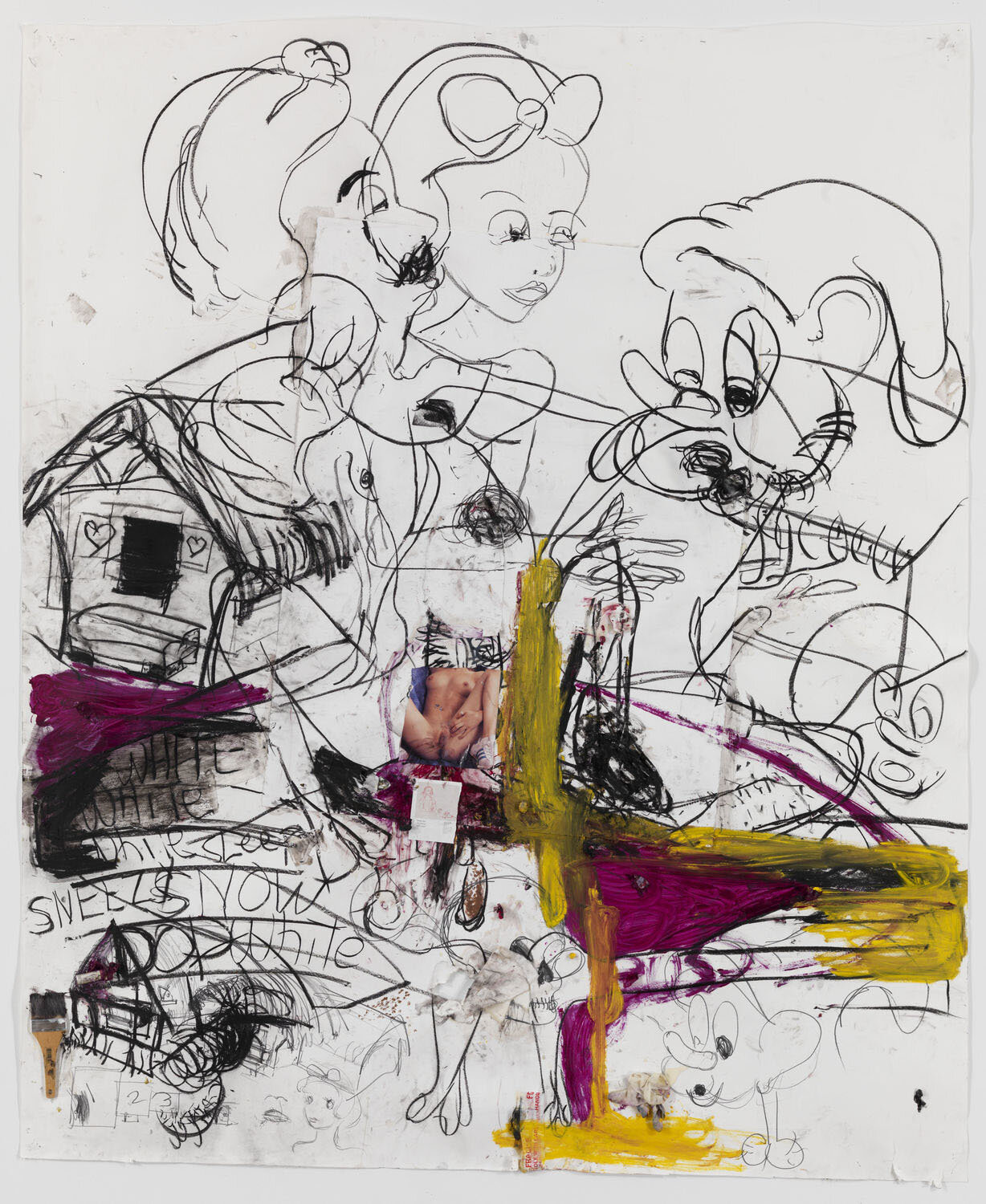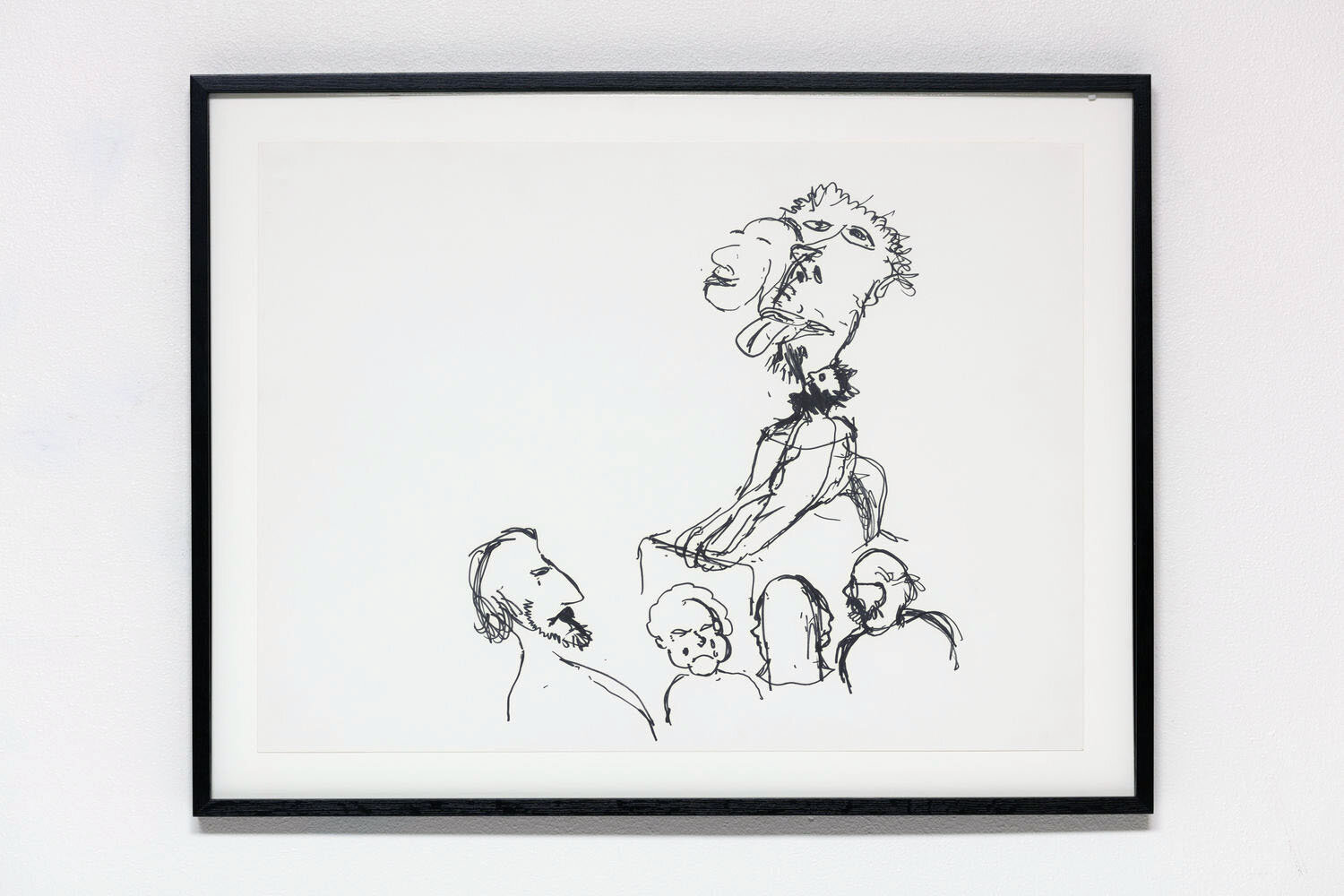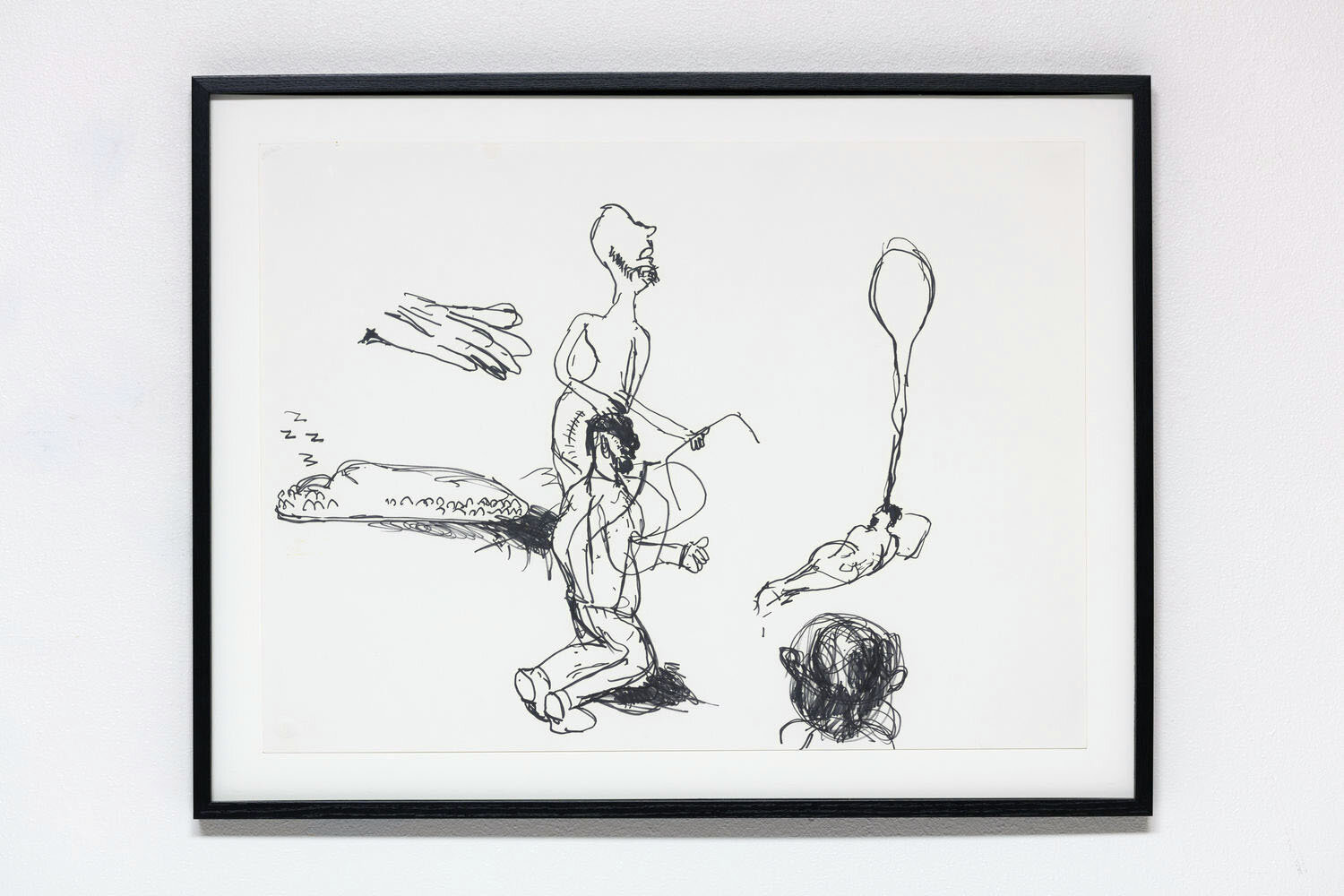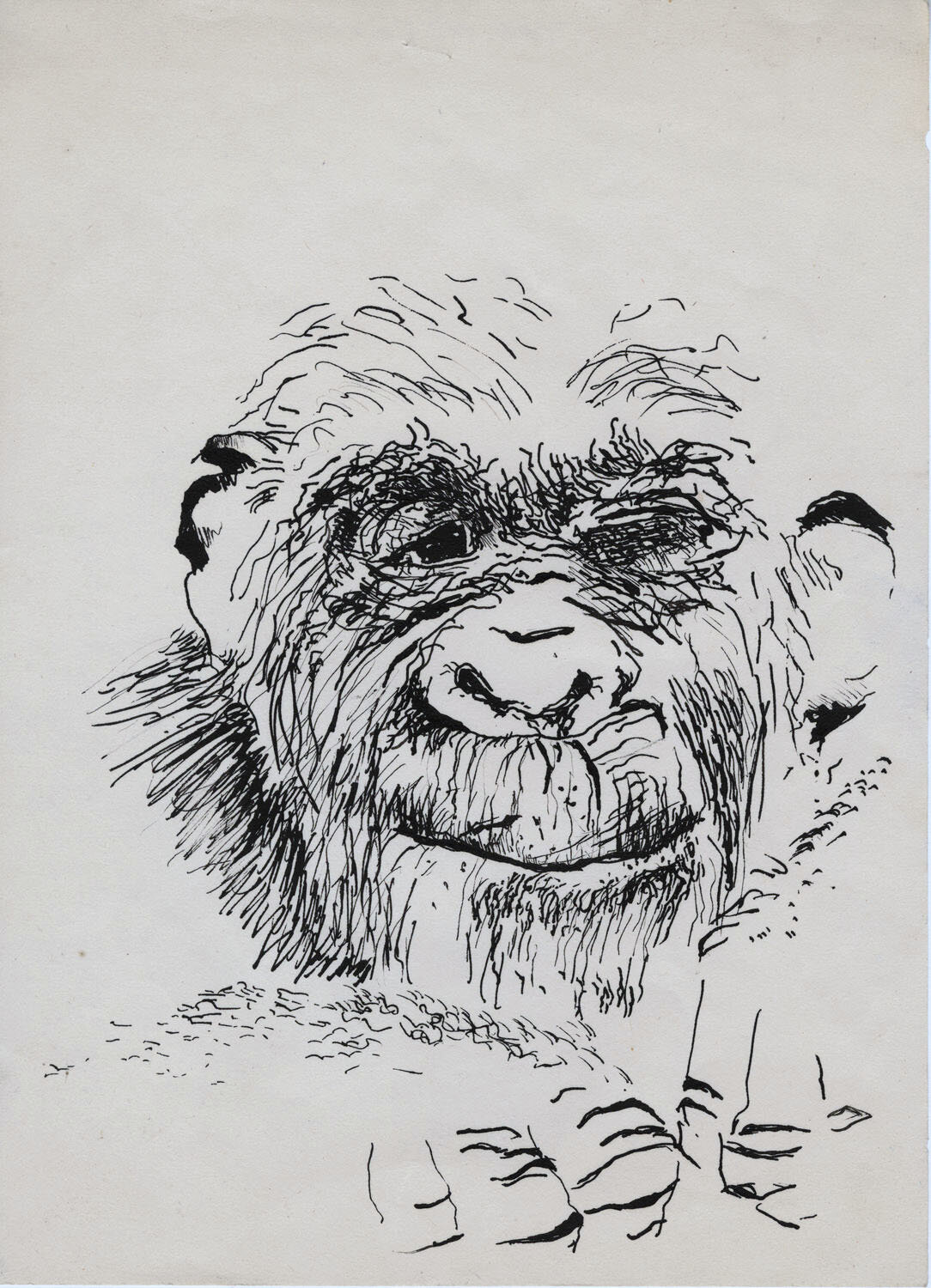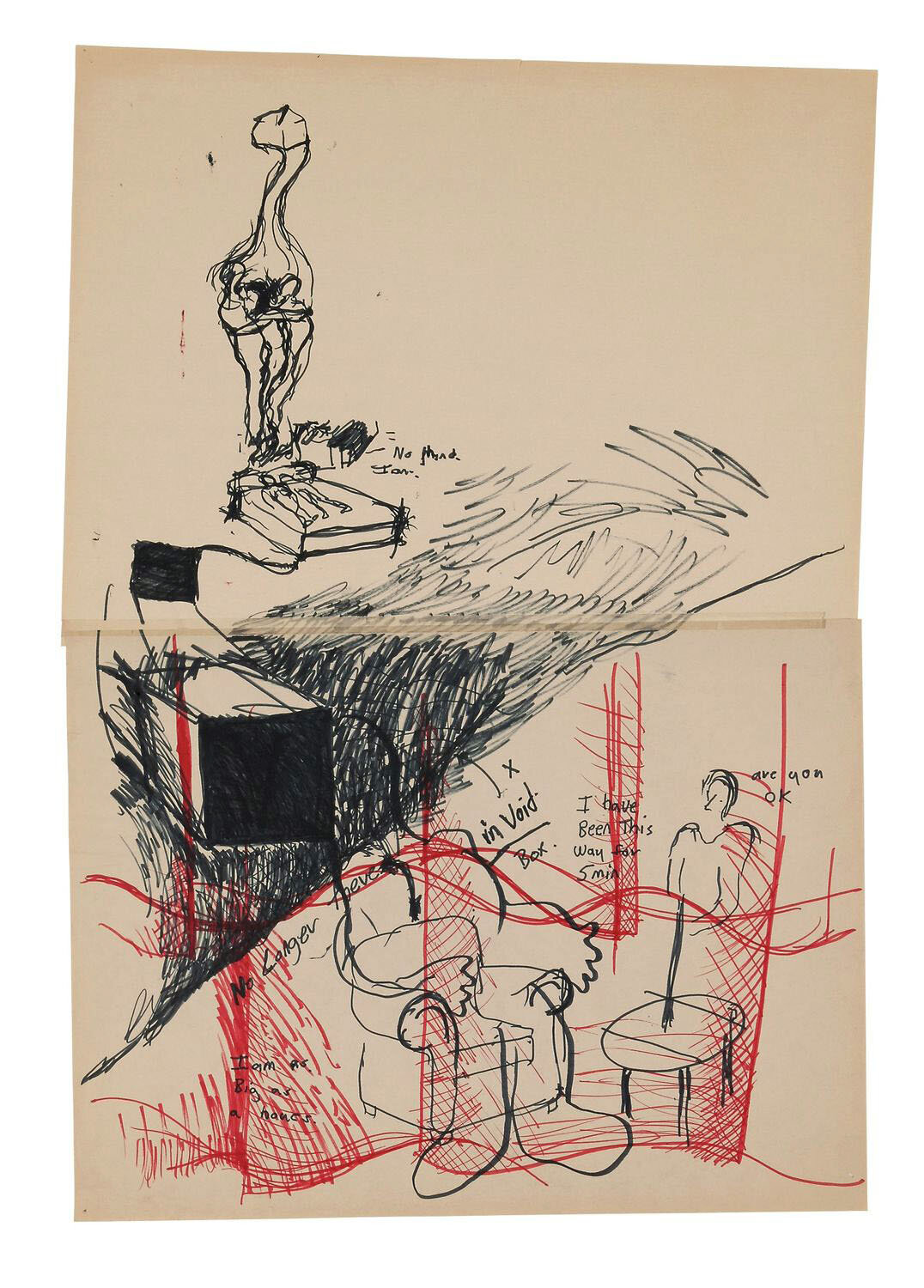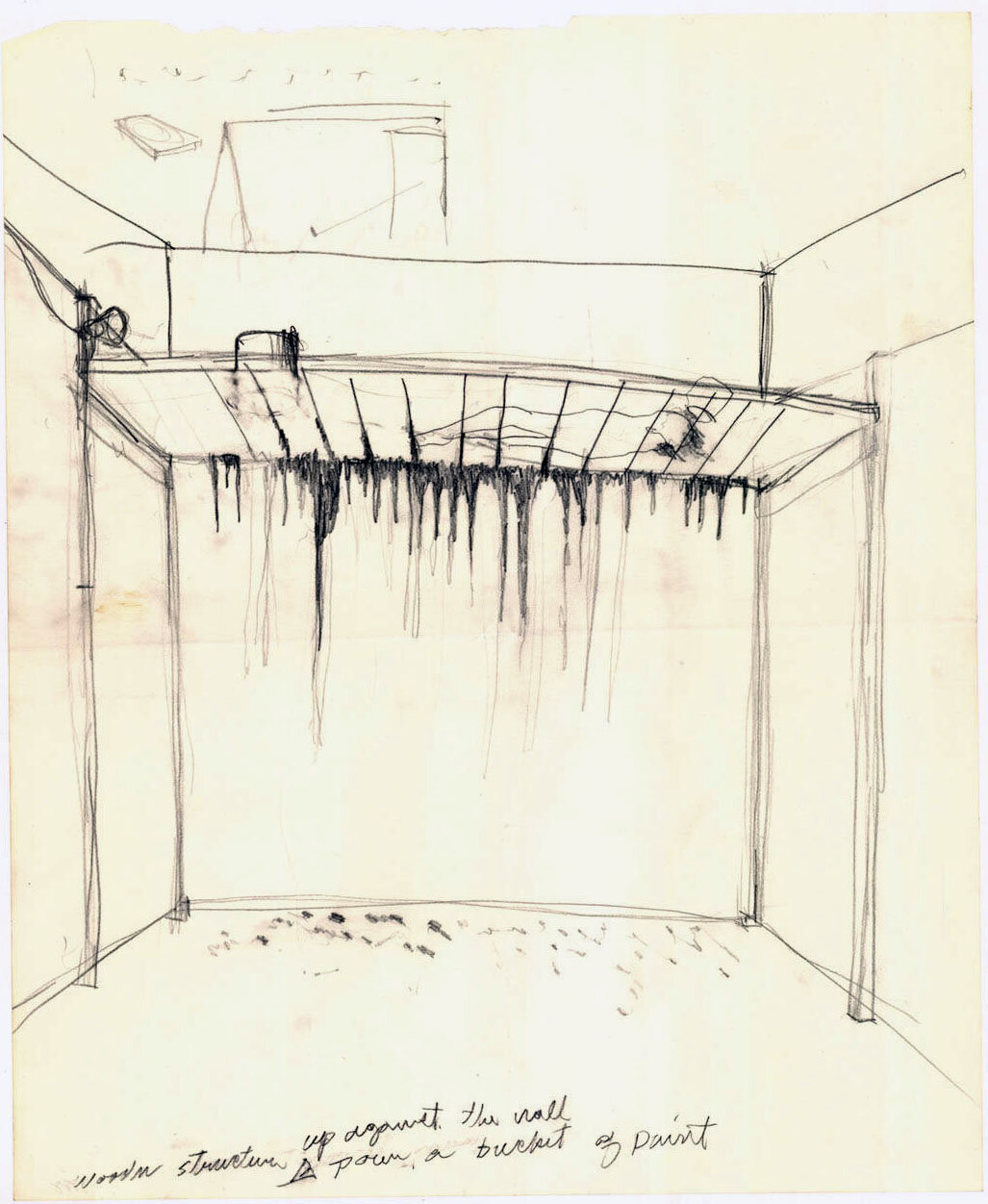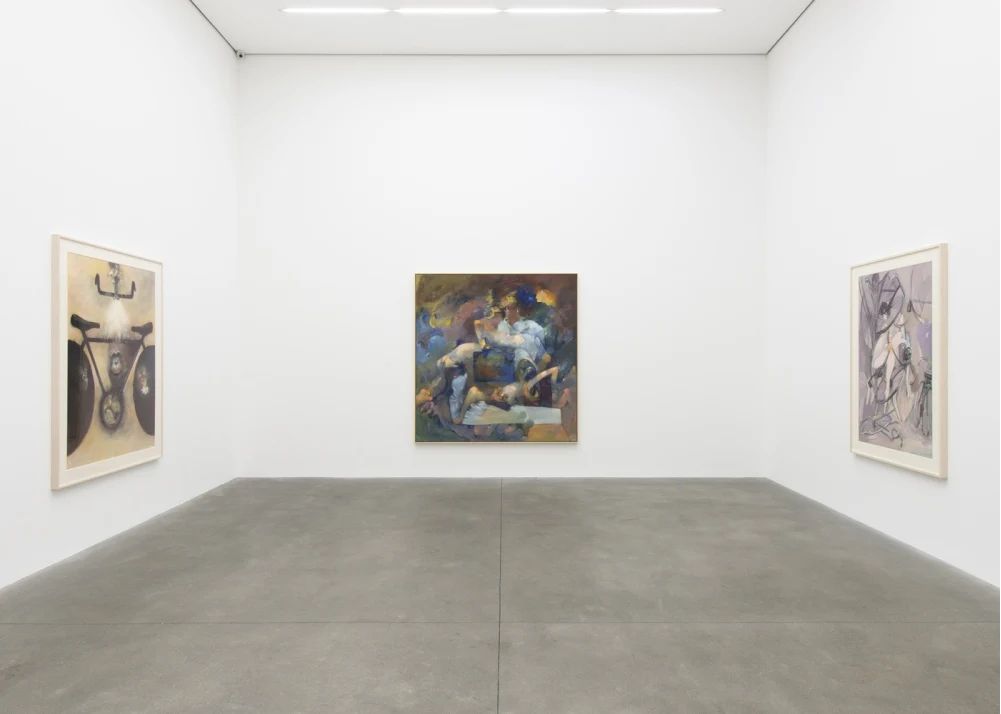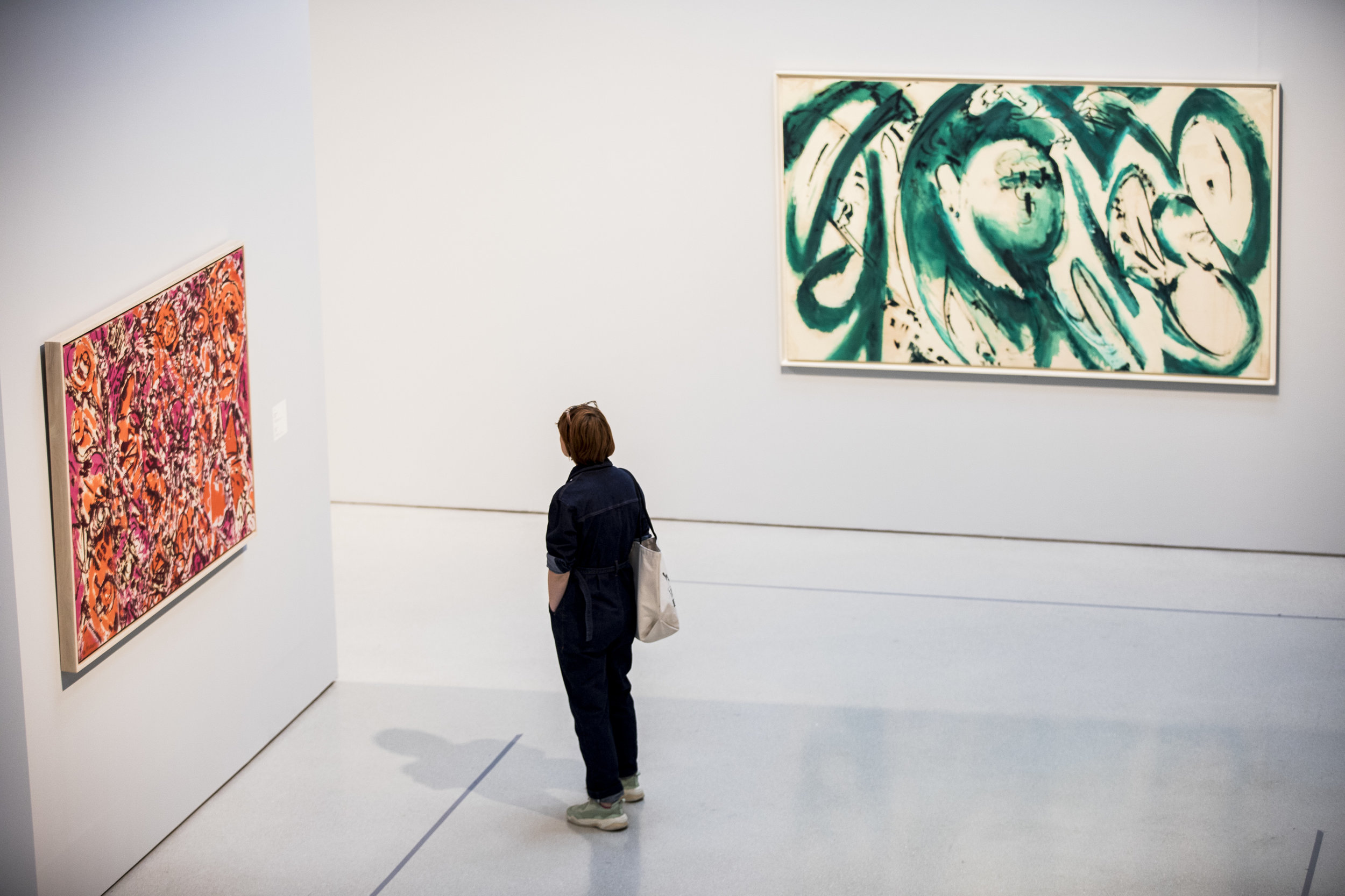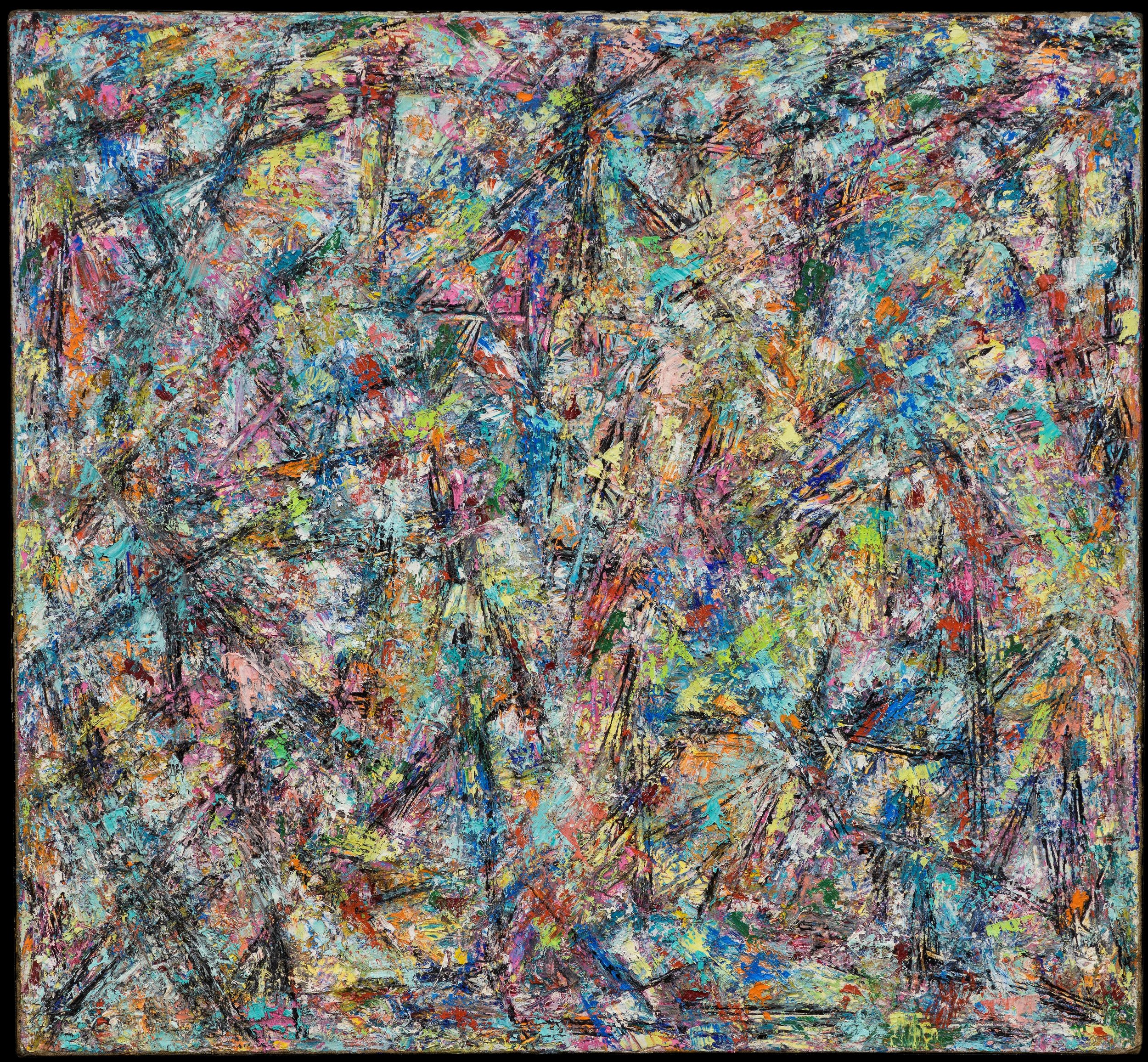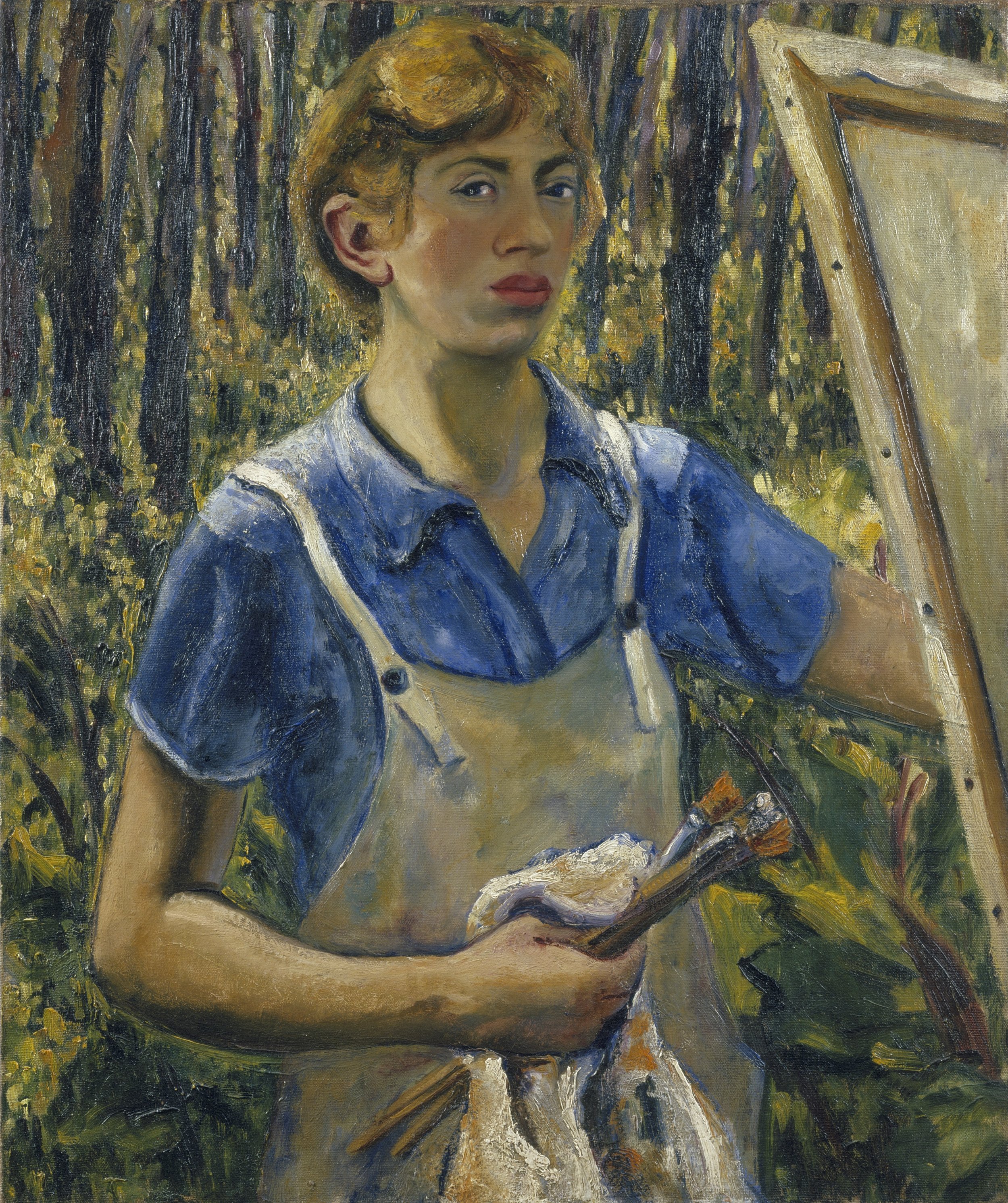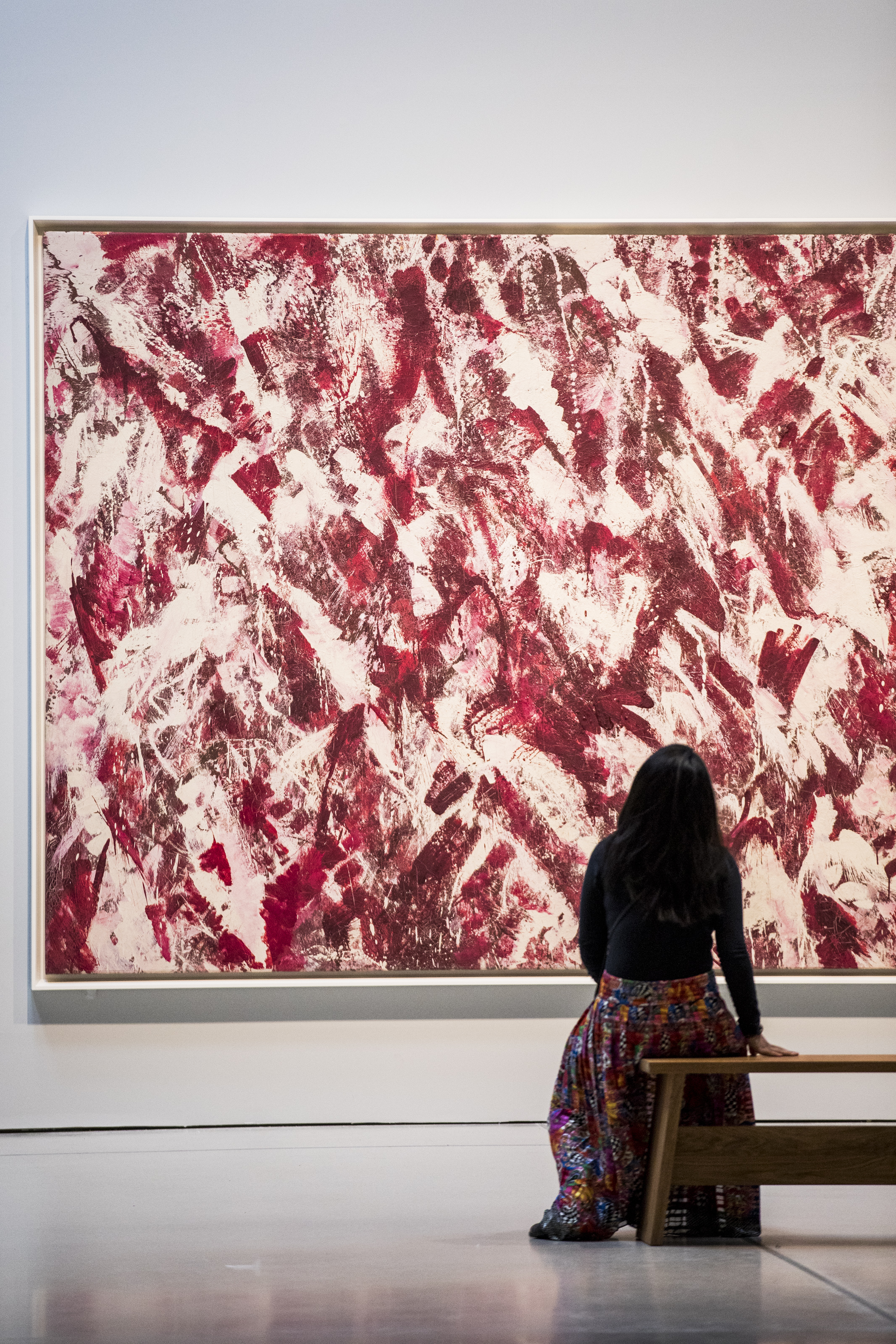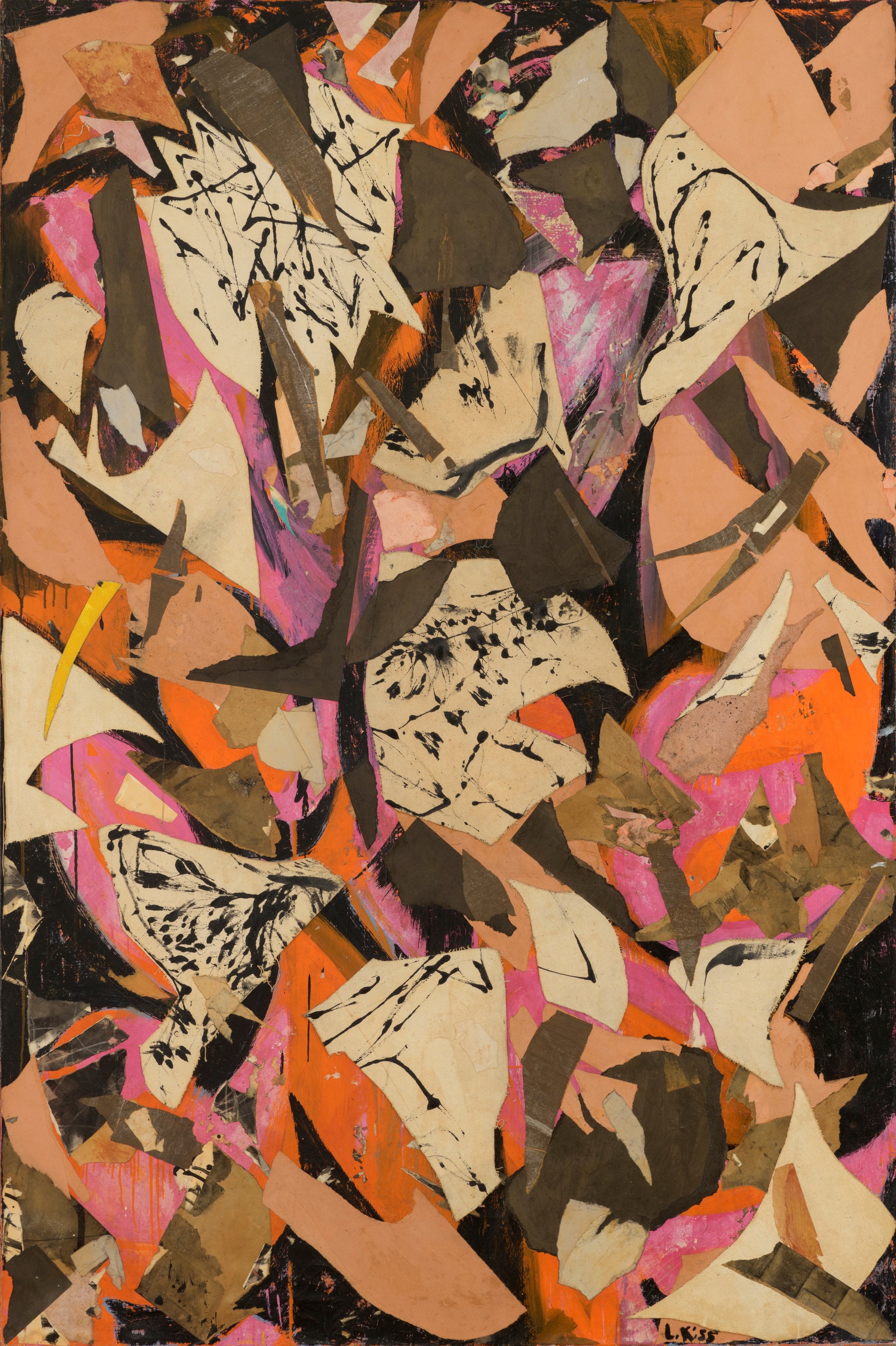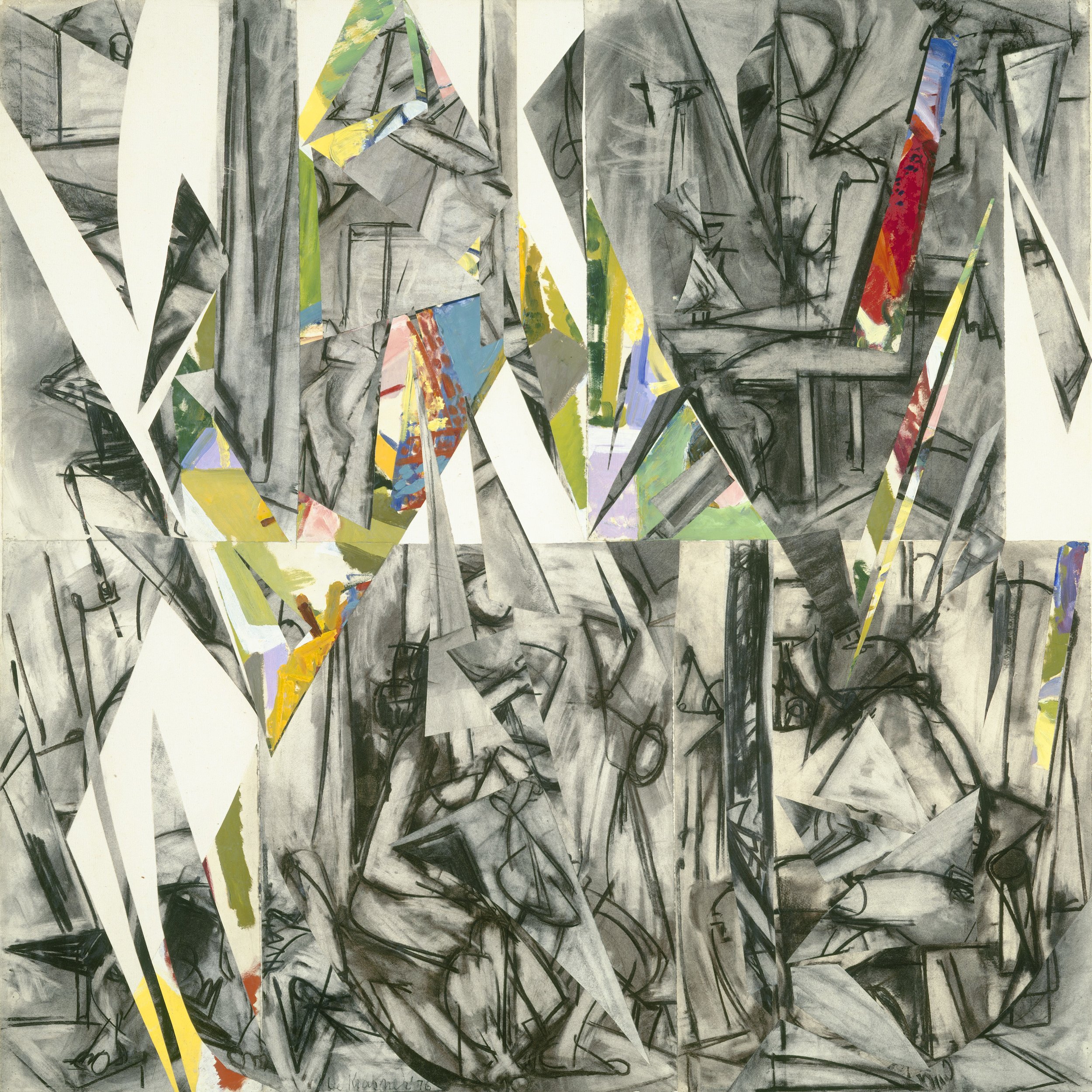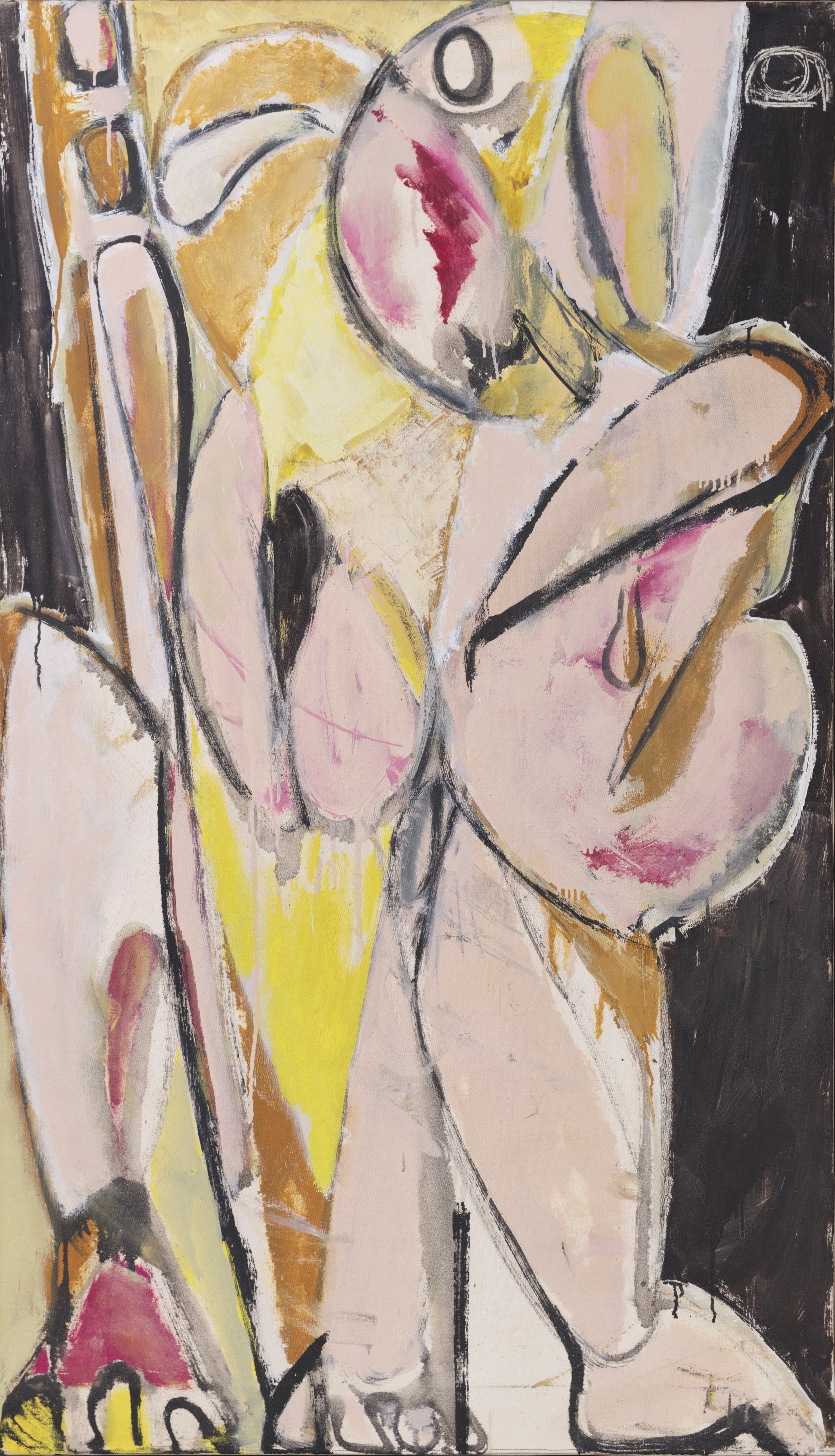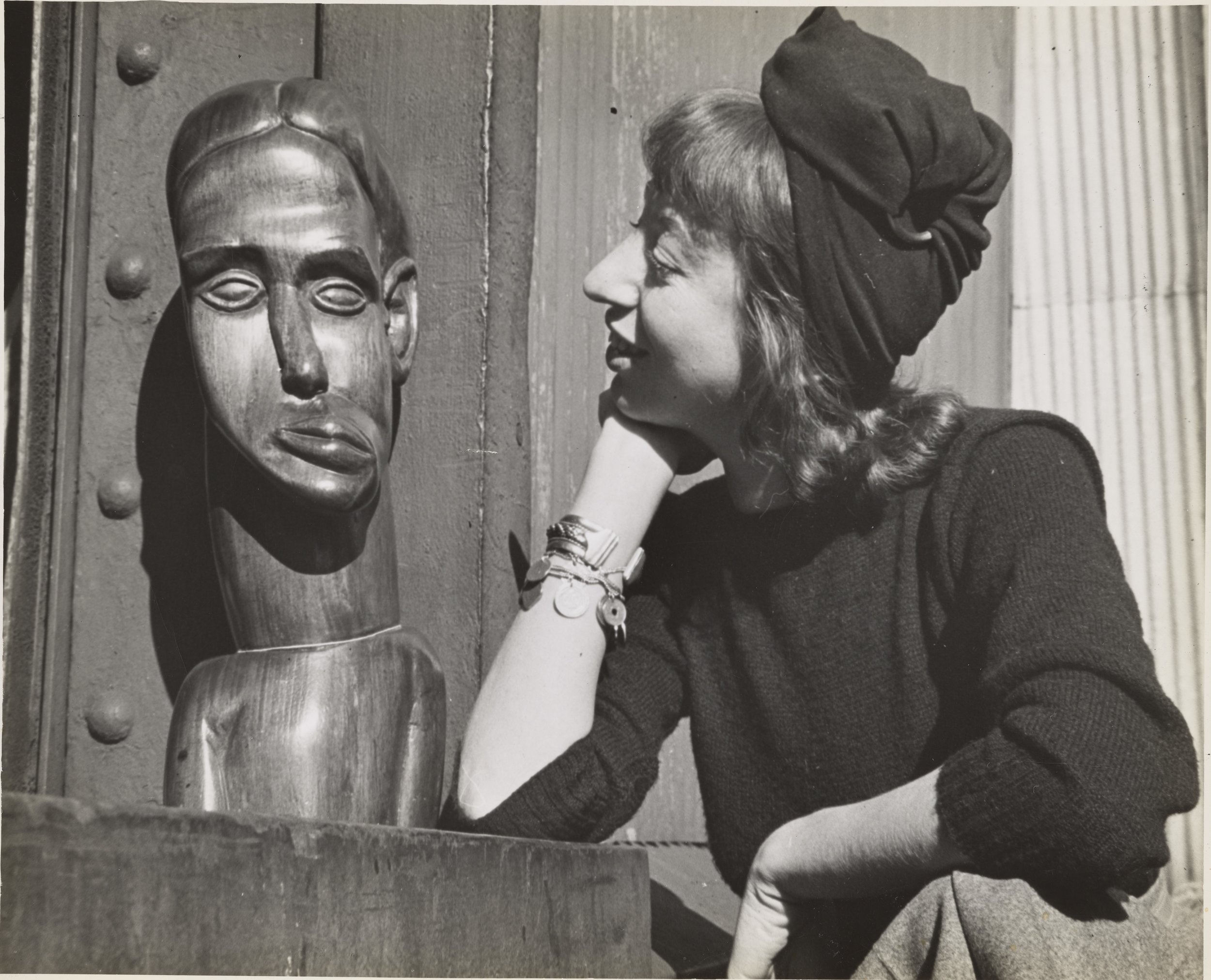text by Mia Milosevic
Materiality lays at the center of Perrotin’s Pacific Abstractions. The use of material fluctuates between artists, but the physicality of abstraction remains distinctly intact.
Lee Bae uses five different forms of wood to construct his charcoal ink on paper. An ode to movement embodies the work, where motion is inextricable from risk. Each charcoal stroke is entirely reliant on the mobility of Lee’s artistic hand—no gray-hued ribbon is ever erased or redone. The movement of material is the final product.
Naotaka Hiro’s corporeal paintings are imbued with a kind of where-the-wild-things-are sexual innuendo. The work’s technicalities deconstruct the body, and then reinstate it with a phallic abstraction that is just discernible enough to make the body knowable. Two perfect, symmetrical holes perforate the bottom of his Untitled (Uproar). These circular lesions mark the negative space the artist inserted his legs into as a processual requirement. The alteration of the canvas threatens prescribed limitations of material—Hiro’s anatomical segmenting shatters the fourth wall of space.
Kazuo Kadonaga’s Wood No. 5 Cl is an intricately constructed log made from paper-thin slices of real wood. The veneer slicer he used to create these vellums pays homage to his upbringing in forestry. The trunk’s growth rings explicitly mimic the surreality of Earth’s extraordinary constructions, made with the caliber of precision and detail generally credited to the hands of the divine. Alas, we may come to question Kadonaga’s mortal statehood. The portrait of an axed tree excavates a visceral reaction: Should we mourn the losses wrought by Big Paper or must we instead celebrate post-natural invention? By virtue of materiality, reincarnation is imminent.
Pacific Abstractions is on view through November 9 @ Perrotin in Los Angeles, 5036 W Pico Blvd




